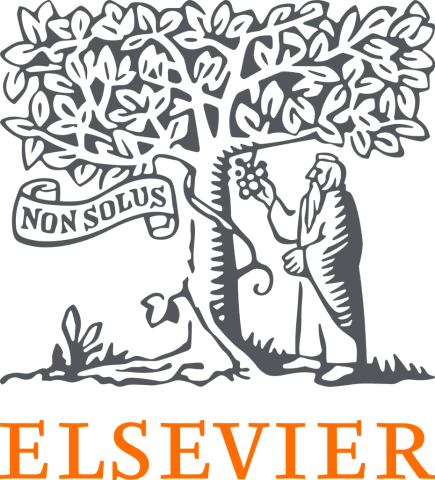
Streamline your research using academic search engines
Specialist search engines can put the most relevant literature at your fingertips, but which is the best one for you, and how can you optimise your searches?
Research management
Sponsored by

Elsevier helps researchers and healthcare professionals advance science and improve health outcomes for the benefit of society.
You may also like
Popular resources
Knowing what has already been established within the field is the first step in any research project. So all researchers need to combine an in-depth understanding of their topic with a broad awareness of the discipline at large to push the boundaries of existing knowledge.
But reconceptualising volumes of peer-reviewed literature over extended periods of time is not a straightforward process. How can academic search engines (ASEs) help streamline a literature search and allow researchers to better formulate insightful research questions?
- Why does open access make publishing more complicated?
- Using literature reviews to strengthen research: tips for PhDs and supervisors
- Understanding peer review: what it is, how it works and why it is important
What is an academic search engine?
Academic search engines aim to combine the convenience and power of web-based search engines with the rigour of peer-reviewed scholarly sources. In contrast to traditional academic databases, which often sit behind a paywall, most ASEs are freely accessible and often link to full-text research articles. ASE searches return publications that are sorted by topic and significance in the field, with the most frequently cited publications appearing higher in the list by default. Researchers can strategically use ASEs to compile an expansive bibliography and streamline the literature review process.
How do academic search engines work?
The underlying algorithms used by search engines are often referred to as “web crawlers”; these index a constant stream of online traffic. The metadata generated through this pre-filtering process are what allow search engines to return immediate results in response to keyword queries. The metadata generated by the search engine algorithms (and in some cases artificial intelligence tools) can be used to find networks of related articles, all of which can be saved into customisable reading lists or batch exported into reference management software.
What is the best academic search engine for your needs?
ASEs with a broad multidisciplinary focus will naturally have the biggest database of sources, and Google Scholar has traditionally been the leader on this front. Other ASEs are all playing catch-up, but Bielefeld Academic Search Engine (BASE), Semantic Scholar and Refseek have all expanded the number of documents hosted within their databases. To generate metadata for millions of sources, Google Scholar harnesses the ubiquity of Google’s web-crawling algorithm, while Semantic Scholar uses AI-driven techniques. The proprietary nature of these tools can limit transparency and user control, and the iterative nature of these tools can compromise search reproducibility. In fact, even consecutive queries using identical search terms in Google Scholar may yield inconsistent results. In contrast, BASE uses an internationally standardised protocol for harvesting metadata while disclosing their list of content providers, and may be better suited for meta-analyses or systematic literature reviews.
While ASEs are typically free for end users, the availability of full-text research articles can be quite limited. CORE mitigates this by hosting only articles published in open access journals, but that may not be a viable option for your topic.
Access to ASEs may also vary depending on your location – for instance, Google is blocked or censored in some parts of the world – and it can be difficult to rely on ASEs as their only literature search tool. The ASE landscape can be quite volatile overall, with Microsoft Academic – the previous main competitor to Google Scholar – shutting down its operations in 2021. The best approach may still be to pair an ASE with a more traditional academic database (such as Web of Science or Scopus) along with databases specifically tailored for your discipline (ERIC, SSRN, Pubmed, CiteseerX).
Top search tips
Regardless of which ASE you choose, as a researcher, you need to use a consistent approach when planning a search.
- Summarise your topic or research questions into one or two sentences.
- Underline keywords in your topic and list their synonyms as alternate search terms.
- Search using different combinations of keywords, and assess if there are too many or too few relevant results.
- Sort the results by publication time frame and citation counts, and save any relevant articles to a personalised reading list.
- Use the “cited by” or “related articles” functionality of ASEs to expand the scope of your key references.
A common search mistake is not incorporating Boolean operators into your search strategy. Google Scholar, for example, uses the following Boolean operators:
- AND limits results by only returning articles that are relevant to all the search terms (for example, learning AND teachers)
- OR expands your results by returning articles relevant to either of the search terms (for example, learning OR teachers)
- The minus sign (-) limits results by excluding keywords (so, learning -teachers)
- -site excludes results from a website (teachers -site:wikipedia.org)
- ~ expands your results by including synonyms for the key term in the search (~teachers)
- “” limits your results by only showing articles with the exact phrasing (“professional learning for teachers”).
Making it work
ASEs are just another tool in a researcher’s toolkit, and you can be creative in how you choose to use them. You can make a separate reading list for every new paper you are writing, and quickly share these reference lists with your co-authors to speed up the final copy-editing process. You can create email alerts every time a prominent author in the field (yourself included!) publishes a new paper, or when a new study cites your work. ASEs can be used strategically to improve the public accessibility of academic literature and to help you form new collaborations.
Jack Wang is an associate professor in the School of Chemistry and Molecular Biosciences at the University of Queensland. He was awarded 2020 Australian University Teacher of the Year.
If you found this interesting and want advice and insight from academics and university staff delivered direct to your inbox each week, sign up for the THE Campus newsletter.
Research management
Sponsored by
Elsevier helps researchers and healthcare professionals advance science and improve health outcomes for the benefit of society.
Additional Links
This video gives more tips on how to use academic search engines such as Google Scholar in research.
Research management
Sponsored by




